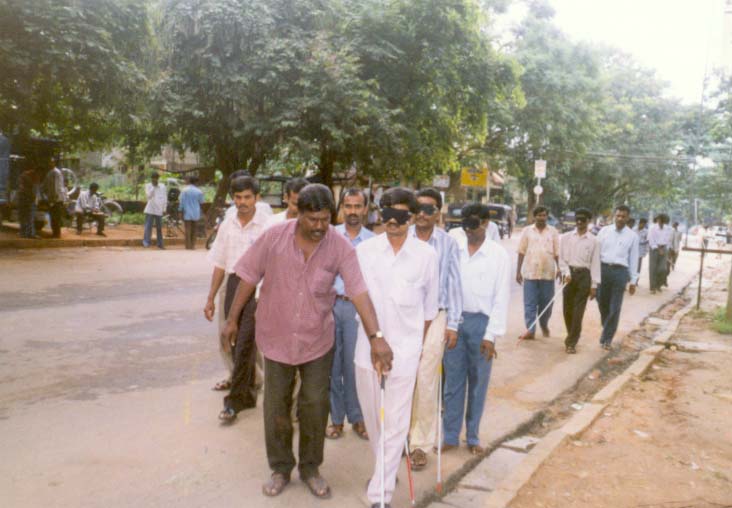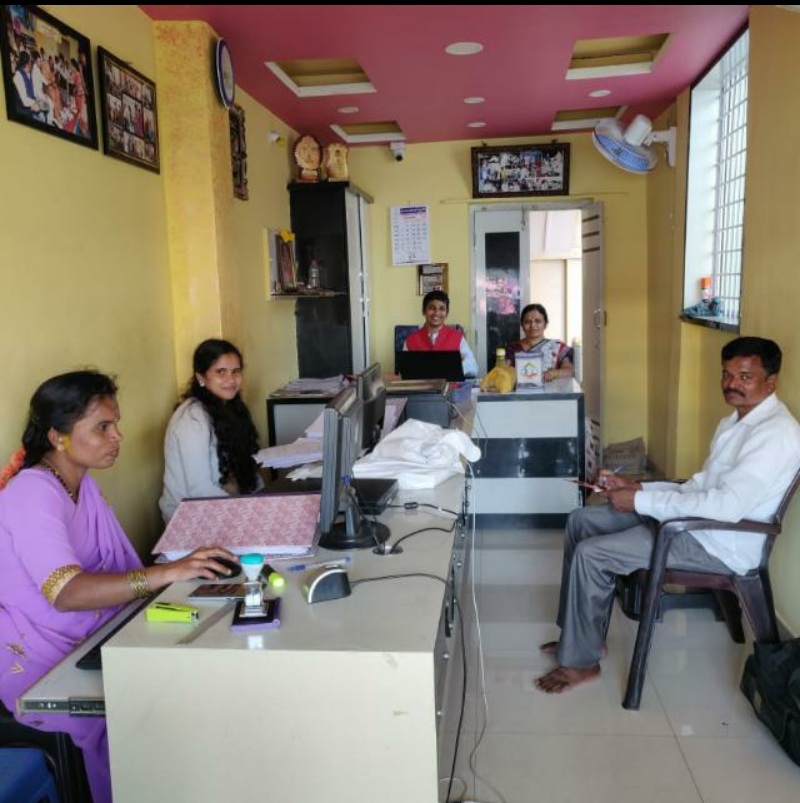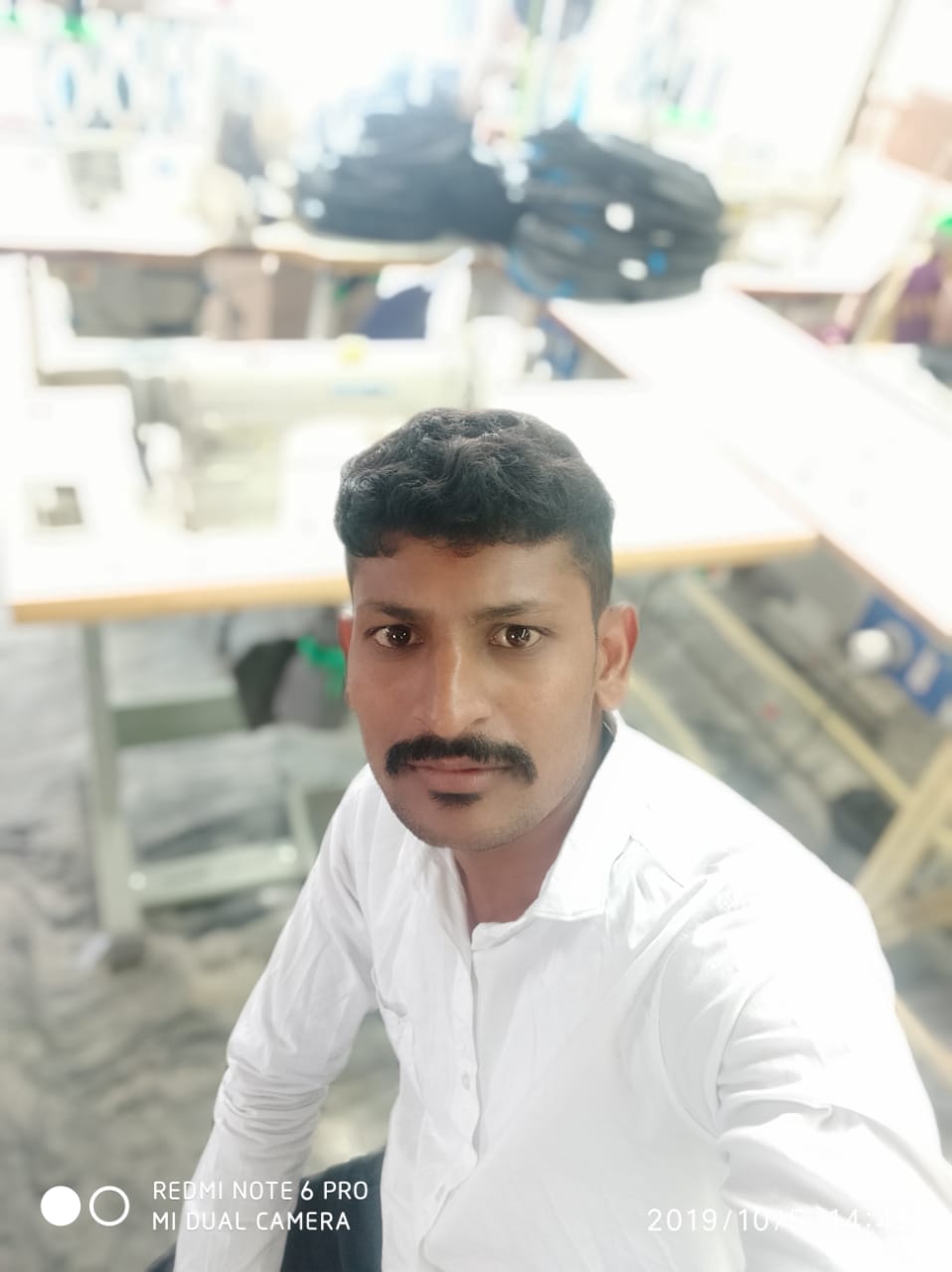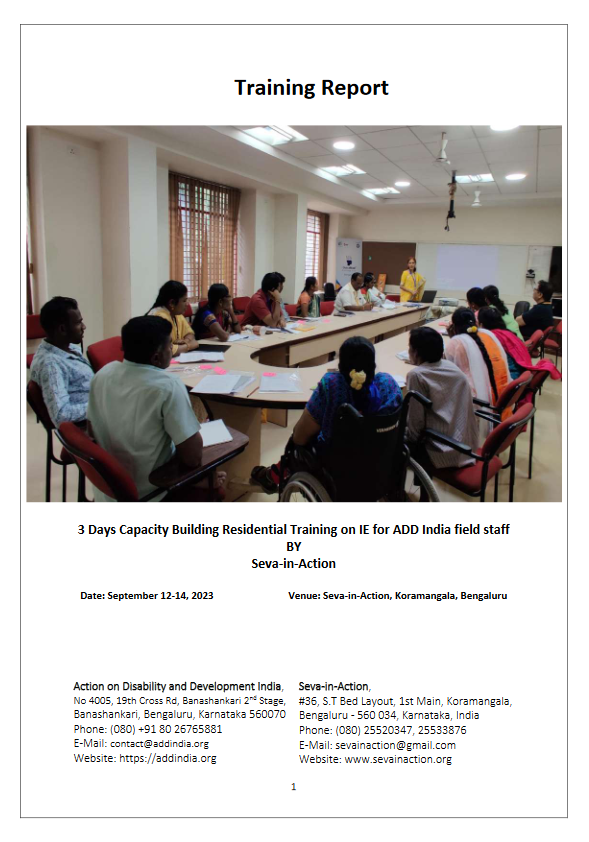Inclusive Education
Working with the systems in implementing the policies
The inclusion of children with disabilities is presently a part of a large worldwide human rights movement which calls for full inclusion of all people including those with special needs in all aspects of life. The concept of inclusive education has great significance in the education space by virtue of its incorporation into the policy documents of numerous international organization starting from of UN, 1994 UNESCO Report (Salamanca Statement), MDG, SDG, most notably the UNCRPD on the Education of Children with Disabilities all affirm the rights of all children to equal education without discrimination within the mainstream education system. The past twenty years in India have seen significant legal and political commitments towards universalization of education and right to education. India has adopted a rights-based approach to inclusion of children with disabilities UN Convention on Rights of Persons with Disabilities (UNCRPD).
Education is critical in expanding life prospects of all children, including children with disabilities1 (CWDs). Education systems that are inclusive, equitable and empowering can help build societies that are in turn inclusive, equitable and strong. This organic connection between education and society lies at the heart of creating change and achieving social justice. India is a diverse country that has traditionally valued differences. However, the country is also highly stratified socio-economically. The new rights-based approach to inclusive education is hence a correct step towards creating a just and equitable society.
The international normative framework comprising the UNCRPD and the Sustainable Development Goals, specifically SDG 4 and Agenda 2030, provide a strong vision and a set of goals that have guided India’s processes of fostering inclusion in schools. The Right to Education (RTE) Act 2009 and the Rights of Persons with Disabilities Act (RPWD) Act 2016 have helped create a comprehensive legal framework for inclusive education. The recent NEP 2020 has made adequate provisions in terms of inclusion of CWDs from early childhood education to higher education. However, there is a need to develop appropriate measures and systemic changes in order to put the policies into realities. One-fourth of the CWD population aged between 5 and 19 do not attend any educational institution. Among 5-year-olds with disabilities, three-fourths do not go to any educational institution. (UNESCO Report 2019.) One of the major challenges that is being faced is development of institutional mechanisms and developing competent human resource who can create inclusive learning environment.
Since its inception Seva-in-action collaborates closely with the Government system to implement its policies through capacity development of the system on the local context. Since 1998 SiA has been involved with the education department at state and national level in capacity building of the system through in-service and preservice teacher education program developing model projects for IE and assisting in upscaling at state level besides evaluation of projects in the area of inclusive education. SiA has a consultative status with MHRD for curriculum development, teacher education an evaluation of IE program.
Seva-in-Action’s focus from the beginning is on Education and it built support systems for mainstreaming children with disabilities (cross disability) in neighbourhood regular schools. One of such support systems is a School Readiness or preparatory program with the aim of preparing children with disabilities and integrating them in nearby regular schools.
It is designed to prepare a child with disability to have sufficient independent functioning required for admission in a nearby school in the community. For eg., a child with intellectual disability in preparatory program is trained in Cognitive, Language/Communication, Motor, Self-help & Social Skills. If the child’s disability condition is severe, then depending on age and present level of functioning of the child, he/she is also trained in self feeding, toileting, dressing, gross & fine motor skills, language/communication skills, safety skills, etc. In case of a child with visual impairment, he/she is trained in orientation and mobility and if we have a child with hearing impairment, he/she is given auditory & speech training and also encourage such children to use hearing aid & lip reading.
The children with disabilities are prepared in the following areas:
- COGNITION – Attention and Memory, Concepts, Symbolic Play, Reasoning and Visual Perception
- COMMUNICATION SKILLS – Expressive Vocabulary, Auditory Perception, Receptive Skills and Conversation Skills
- SOCIAL SKILLS – Self-concept (social awareness) and Interpersonal skills
- SELF-HELP SKILLS – Activities of daily living
- MOTOR SKILLS:
a) GROSS MOTOR SKILLS – Locomotion, Stairs, Jumping, Balance, etc.
and Outdoor Activities
b) FINE MOTOR SKILLS – Hand use, Manipulation, Visual-Motor Skills, etc
In Ramanagara, the Samvardhana Centre has a resource room equipped with adequate teaching learning aids for teaching the activities of the above areas. Here children get one-to-one teaching support based on the Individual Education Plan (IEP), besides group teaching and they also get auditory training, speech therapy, ADL skills and physiotherapy on the basis of their needs. The evaluation is an ongoing process through participation, observations, tests, etc. Usually, children are ready to go to mainstream school after 1 or 2 years depending on the type and degree of disability, aptitude of the child and involvement of parents. Some children even take 3-4 years. The resource teacher is also supporting parents who have children with epilepsy in their medication, besides providing education.
SiA is working with children & schools to make inclusion effective by preparing the children in the resource centres and mainstreaming them with the assistance of resource teacher and parent’s support to a nearby regular schools. Children with disabilities are required to learn pre-academic skills, which are necessary for reading, writing, computation and problem solving in School. SiA provides need-based resource teaching support to the child and resource support to the school. The resource centre is also encouraging admissions of children with special needs in mainstream schools by working closely with the community and schools in Ramanagara.
At resource centre, the resource teacher helps them in understanding the concepts which they did not understand in the regular class with special teaching learning materials and help them in doing homework given in the class. They also help them in revising class lessons at the centre and give practice in writing tests- to understand the questions and write correct answers. Children with HI / speech problem also get speech therapy sessions. Sometimes volunteers such as students/ teachers/ parents help in providing resource teaching support to the children at Resource centres.
Introduction:
Curriculum – We need to understand that teaching is not all about curriculum and need to understand the learners who struggle with the curriculum. Need Resources to help such students in order to promote inclusion.
RESOURCES:
We need to understand that teaching is not all about curriculum and need to understand the
learners who struggle with the curriculum. Need Resources to help such students in order to
promote inclusion.
The Universal Design for Learning (UDL) strategy offers such a framework for designing learning
environments that are accessible and effective for all learners. It’s all about designing lesson plans
that allow for multiple means of engagement, representation and action & expression.
To enable Schools to create inclusive learning environment adequate Resource Support system is
required in order to accept all kinds of learners with diversity and provides equitable learning
opportunities for all.
Resources for Inclusive Education are categorized into
| CONCRETE RESOURCES | ACTIVITY RESOURCES | DIGITAL RESOURCES | INCLUSIVE SCHOOLS RESOURCE CENTRES, NETWORKS |
|---|---|---|---|
| Natural – Environment- Sun, Soil, Plants, Animals | Art-Dance/Drama/ Singing | E-resources – e-books, e-images, e-audios | Develop Resource Centres/Corners in the School |
| Material – Charts, Models, Flash cards | Exploratory-Nature walk | Digital materials – CD- ROM, talking books | Inclusive Schools Network – Sharing classroom practices |
| Print – Text books, Newspapers, posters | Gardening, Games | Online tools – Wizer, Edpuzzle, Live worksheets, podcast | Collaboration with Institutes – Capacity building of teachers |
.png)



.jpg)
